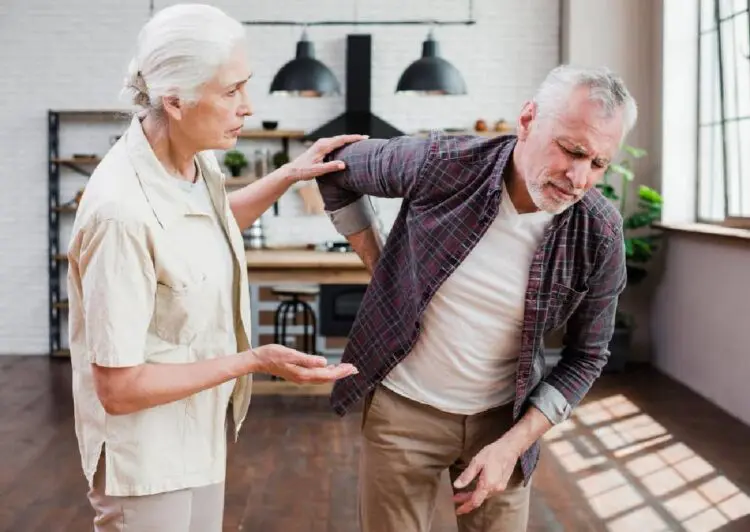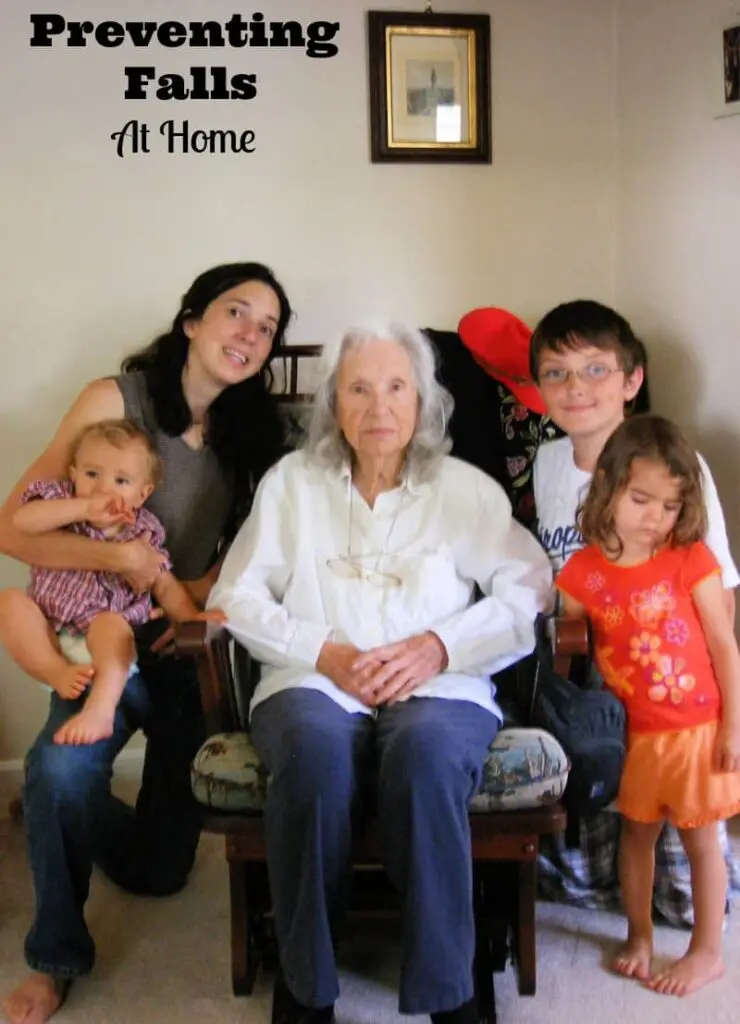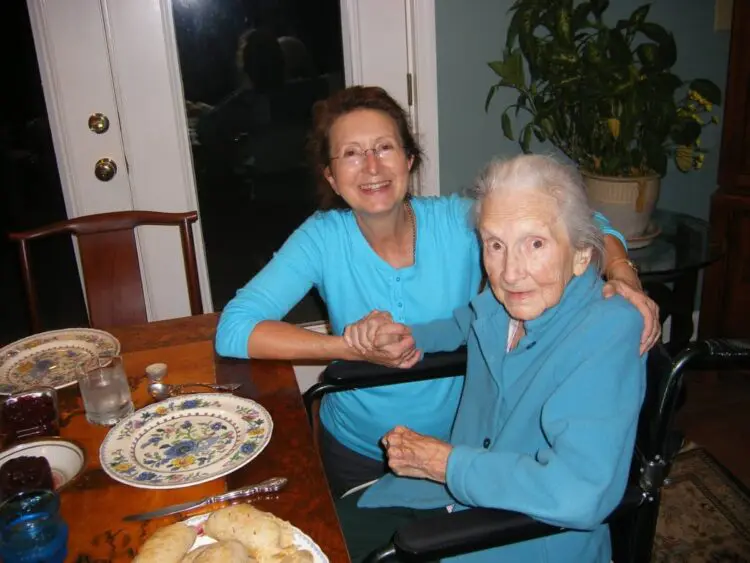Every year, one-quarter of older adults (ages ≥65 years) in the United States report a falling accident. Even though not all falls cause an injury, 37% of fallers, according to the Centers for Disease Control and Prevention, said that they were injured enough to need medical attention or had to limit their activities for at least one day, which translates to 9 million fall-related injuries. Such occurrences can result in a poor quality of life and loss of independence among older people. The good news is that a lot of falls can be avoided with a special evaluation of the potential dangers at home. Let’s discover the most common tips for fall prevention at home in the elderly to provide a safer environment for them.

Common Reasons Seniors Have Fall Accidents at Home
Medical conditions are paramount in increasing the risk of falling among older adults. Illness and diseases, including arthritis, Parkinson’s disease, diabetes, and multiple sclerosis, may lead to poor balance and mobility issues. Blood pressure medications, sleep aids, and certain antidepressants may cause dizziness or drowsiness. All of these contribute to increased risks for falling among aging people.
Vision problems and hearing impairments also raise risk factors for seniors. These issues should be diagnosed during routine visits to medical care facilities. Most of the accidents at home are caused by sensory impairments. Therefore, seeing a health care provider for appropriate eyewear and hearing aid devices may help minimize the occurrence of falls.

Preventing Falling: How To Make Your Home Safer With Room-by-Room Modifications
When considering home modification, know that the bathroom is the most dangerous room at home for elderly people. Some grab bars should be installed around toilets and shower/bath areas for improved safety. Non-slip mats with proper grip do not allow slippage on wet surfaces. Grab bars in showers as well as raised toilet seats keep day-to-day tasks easier and less risky for the elderly with mobility limitations.
The bedroom needs solid lighting, especially during the night when people have to visit the bathroom. The height of the bed should be the one that allows the feet to touch the floor when sitting. This way, the senior won’t fall off when trying to stand up. Reduce the use of throw rugs and ensure that all pathways are free from any obstruction.
Kitchen modifications focus on accessibility and safety. Keep frequently used staff at the waist level to minimize reaching or bending. Non-slip flooring provides better traction. Adequate lighting helps prevent accidents during meal preparation. Remove step stools to eliminate the temptation to reach high places.
Entrances, corridors, and other living areas require free space for safe movement. Secure loose electrical cords against walls to prevent tripping. Furniture should be arranged to create wide walking paths. Removing small decorative items and unnecessary clutter makes the home safer for navigation.
Technology and Assistive Devices
Today, there are many ways that modern technology has helped reduce the chances of falling among seniors. Personal alert systems offer one-click solutions for emergencies since they can immediately connect the owner to the relevant authorities. Another useful example for fall prevention at home in the elderly is motion-sensor lights that automatically illuminate dark areas. Such devices are top-notch helpers for aging people and their family.
There are assistive devices specifically designed for seniors to help them ease their daily chores. Canes or walkers are used for better while going outside. They should be fitted correctly to the user’s height. For those with poor mobility, a wheelchair or a mobility scooter can be considered. They can be used both outdoors and indoors, and some models can be folded for storage in tight places. Pay special attention to a power wheelchair that lifts you up and down. The device boasts an incredible feature that lifts its users so they can reach the highest aisles.

7 Ways to Prevent Falling at Home
Here are few small changes that can be made to help with fall prevention at home in the elderly.
1. Remove Tripping Hazards
Clearing walkways of potential obstacles makes movement safer throughout the home. Remove or secure loose rugs, especially those with curled edges. Keep electrical cords against walls and away from walking paths. Pick up items like books, shoes, or blankets from the floor.
2. Improve Lighting
Consider installing brighter bulbs and additional light fixtures to prevent falls caused by poor visibility. Place nightlights in the hallways, bathroom, and bedroom. Invest in motion-sensor lights that activate automatically. Make sure light switches are easily accessible at room entrances. Having a flashlight near the bed provides extra safety during power outages.
3. Install Safety Features
Adding senior-friendly grab bars in bathrooms and handrails on both sides of stair cases provides crucial support. Consider installing a raised toilet seat and shower chair for safer bathroom use. Anti-slip strips on stairs and in bathtubs offer better traction and deal with the fear of falling on a wet floor.
4. Keep Items Within Easy Reach
Organize frequently used items at waist level to avoid stretching or bending. Store everyday dishes and cooking supplies on lower shelves. Place commonly used items in easy-to-reach drawers. Using a reacher tool helps grab items safely without overextending.
5. Ensure Proper Footwear
Wear well-fitting shoes with non-slip soles to maintain stability. Choose footwear that provides good support. Avoid walking in socks or loose slippers. Keep shoes near the bed for nighttime bathroom visits. Having solid indoor shoes helps prevent tracking outdoor moisture that could create slippery conditions.
6. Maintain Clear Communication
Keep a phone within easy reach for quick access to help if needed. Consider wearing a medical alert device for additional safety. Post emergency numbers in visible locations throughout the home. Regular check-ins with family members or neighbors provide an extra layer of security.
7. Address Outdoor Hazards
Maintaining safe outdoor spaces helps prevent falls when entering or leaving the home. Keep steps and walkways clear of leaves and debris. Install proper lighting near entrances and along walkways. During winter months, ensure prompt snow removal and ice treatment on walking surfaces.
Conclusion
Reducing fall hazards for the elderly requires a proactive approach focused on creating a safe environment, promoting physical strength, and providing necessary support systems. By addressing common household hazards—like slippery floors, poor lighting, and obstacles in pathways—caregivers can significantly reduce fall risks. Additionally, regular physical activity, such as balance and strength exercises, helps maintain mobility and coordination, further lowering the likelihood of falls. Supportive measures, including assistive devices and regular vision check-ups, also contribute to a safer living space. Implementing these strategies creates a secure environment that encourages independence while minimizing the risk of injury among elderly individuals.
Preventing falls requires a comprehensive approach combining home modifications, lifestyle changes, and proper use of assistive devices. Consider the fall prevention measures mentioned above to lower the risk of falling among seniors at home. Take action today to provide a safe home environment for all family members.
Related Posts:

Brook says
Hi. Watching your parents age is hard. A privilege but still hard. Thanks for these tips to help keep them safe from falling.
Ovais Mirza says
This article provides valuable, practical tips for creating a safer home environment for seniors, addressing the common causes of falls with simple yet effective solutions.
From enhancing lighting to adding grab bars and keeping items within reach, each recommendation supports independence while reducing risks.
The focus on both indoor and outdoor safety, along with the advice on proper footwear and emergency preparedness, emphasizes a holistic approach to fall prevention.
It’s an essential read for anyone looking to make their home more senior-friendly, underscoring that small adjustments can have a big impact on safety and peace of mind.
Jeevan Tech says
Great article! Preventing falls at home is such an important topic, especially for the elderly. Simple adjustments like non-slip rugs, proper lighting, and grab bars can make a huge difference in safety.